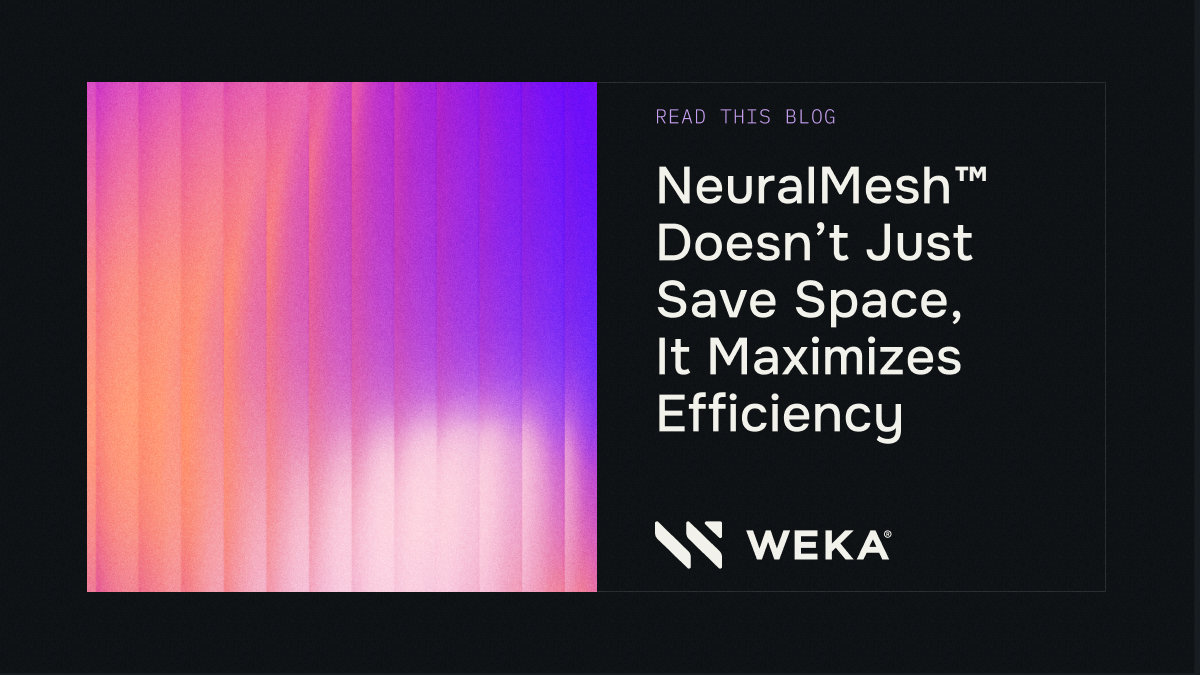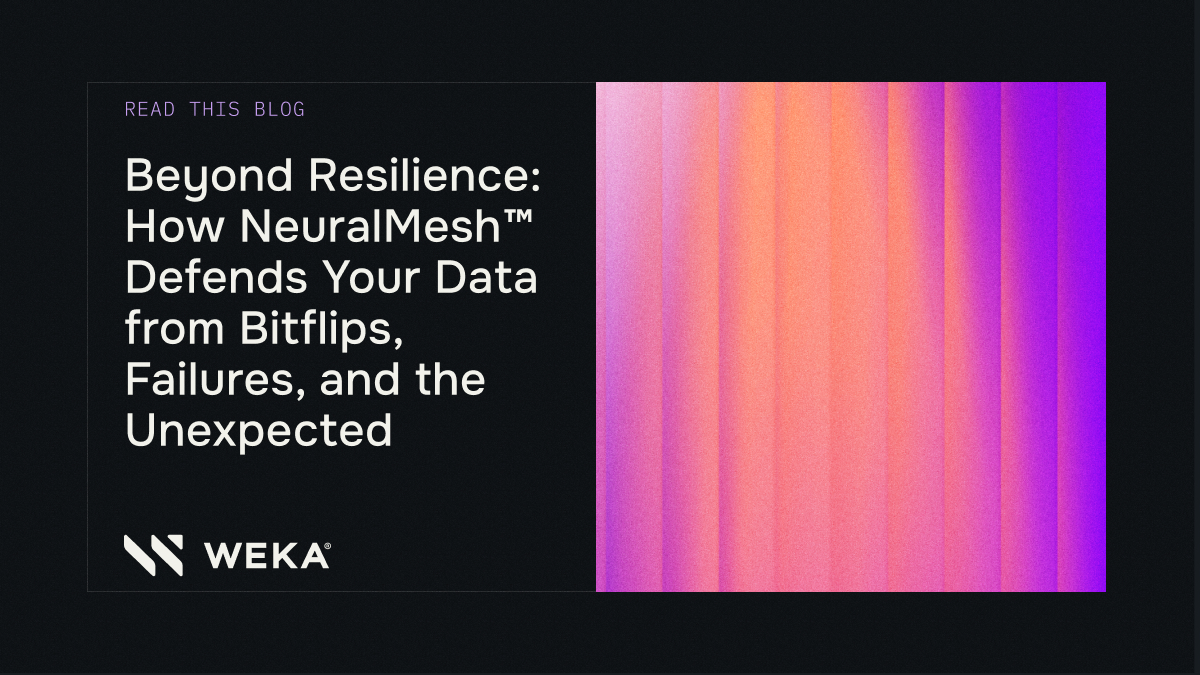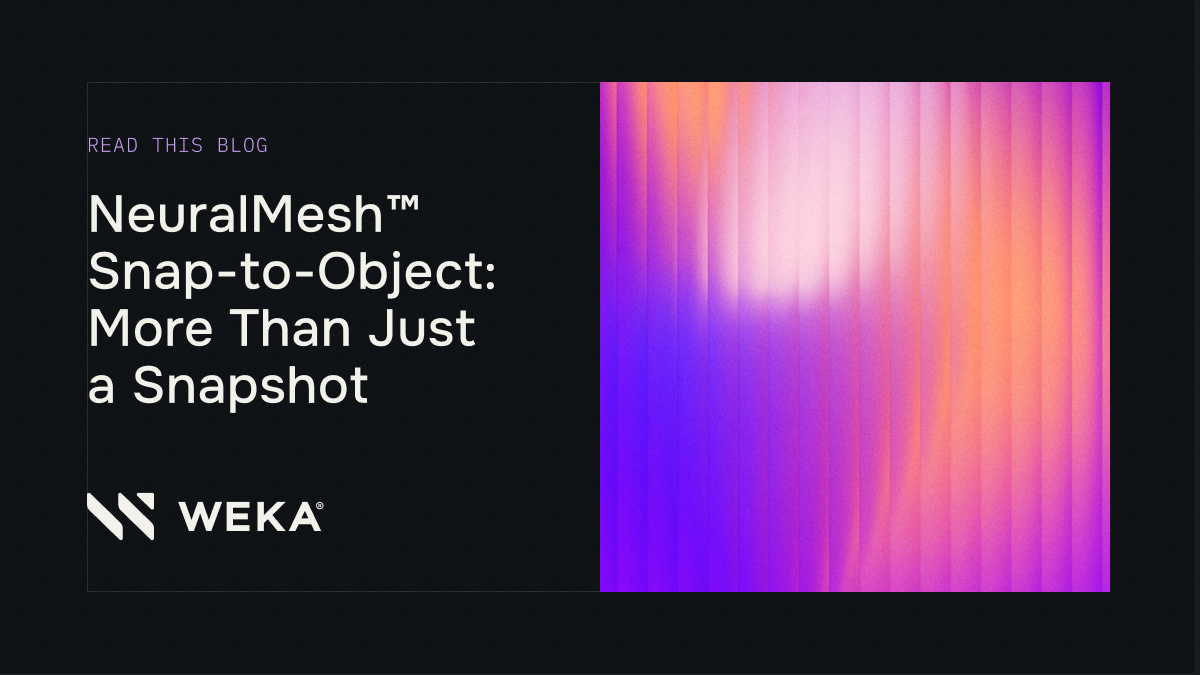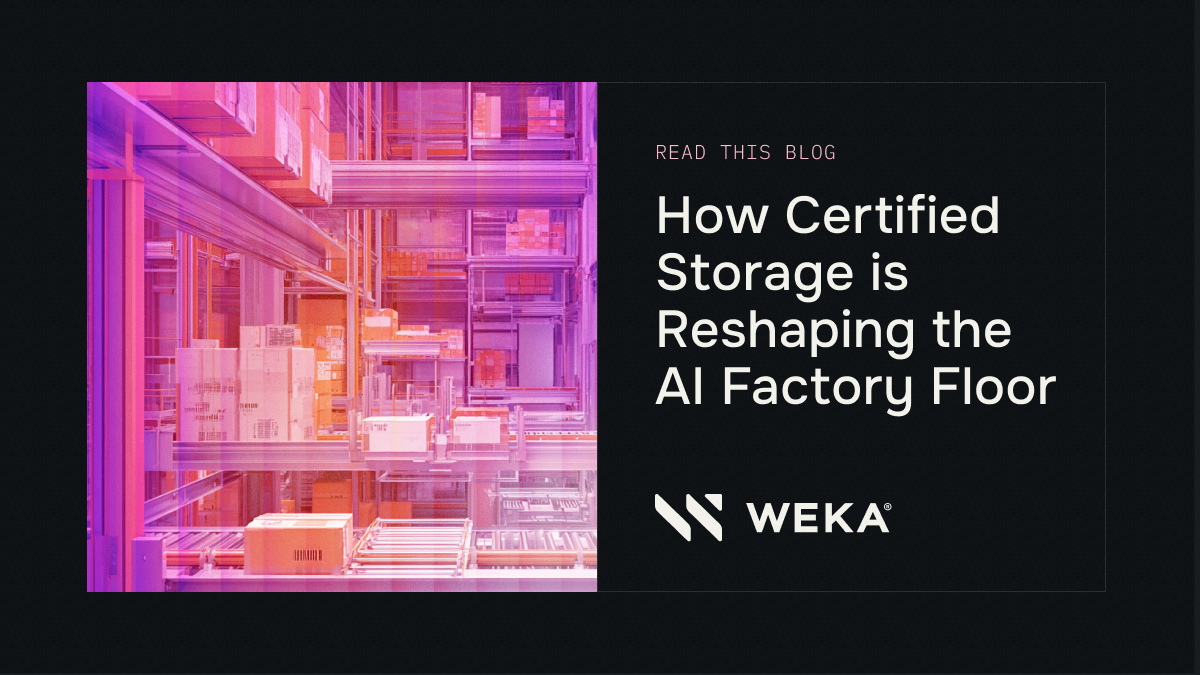NeuralMesh Doesn’t Just Save Space, It Maximizes Efficiency


If you’ve been following my recent posts on AI infrastructure, you’ve probably noticed a theme: efficiency matters. It’s not just about how fast your GPUs can go—it’s about how intelligently your system handles data. And when it comes to managing storage in the AI era, NeuralMesh™ by WEKA® brings a quiet superpower to the table: advanced data reduction.
This isn’t just basic dedupe. This is intelligent, similarity-aware optimization designed to make your high-performance NVMe storage work harder—and go further.
NVMe Isn’t Cheap, We Make It Count
Let’s be real: NVMe delivers incredible performance, but it comes at a premium. You’re not buying cheap commodity disks anymore—you’re investing in serious infrastructure to feed serious compute. That makes every byte count. NeuralMesh helps you store more, spend less, and waste nothing by aggressively working in the background to reduce redundant and repetitive data —without impacting performance.
Going Beyond “Identical”
Most storage platforms can deduplicate exact copies of data. Great—but what about files that are almost the same?
That’s where similarity deduplication comes in. NeuralMesh uses a technique called similarity hashing to detect data blocks that aren’t bit-for-bit duplicates, but are still highly similar and compress well together. Think of configuration files with minor differences, log files from similar runs, or slightly updated binaries. These are all targets for dedupe—just not the kind most systems can see.
How It Works: Smart, Subtle, Efficient
When data is written into a NeuralMesh filesystem, it’s ingested uncompressed to keep IO performance smooth. Then, behind the scenes, our data reduction engine kicks in. It uses similarity hashing to identify which blocks look alike, and groups them for efficient compression and deduplication.
All of this happens in the background, automatically. There’s no tuning required, no application-level changes, and no disruption to your workload. Your apps keep seeing the full dataset, NeuralMesh just makes sure it takes up far less actual space.
Designed to Be Invisible (In a Good Way)
From the application’s point of view, nothing changes. Files are accessed and used exactly as written. But behind the scenes, WEKA stores them in a radically more space-efficient format.
Whether it’s a 100GB file filled with zeroes reduced to kilobytes or thousands of repetitive log entries with only timestamp changes between them, NeuralMesh optimizes it all—automatically and transparently.
A Few Ground Rules
To keep things efficient and predictable, NeuralMesh’s data reduction is:
- Filesystem-specific (you enable it where it makes sense)
- Requires thin provisioning so the system can overcommit logical space and reclaim it through reduction
- Only targets user data—not metadata, xattrs, or inode-level system structures
Where It Works Best
NeuralMesh data reduction isn’t just for logs and zero-filled files—it delivers real results for real application workloads, with measured space savings of up to 8x in production.
We’ve seen the biggest benefits in:
- AI/ML model training and inference datasets
- EDA (Electronic Design Automation) workflows
- Databases and structured application data
- Code repositories and classic software builds
These workloads often contain large volumes of similar or versioned data—making them ideal candidates for similarity deduplication and intelligent compression. It also means that even files written with high entropy codecs, like things that are already compressed, can have substantial gains.When paired with high-capacity NVMe and dense compute nodes, NeuralMesh helps you consolidate what used to require multiple infrastructure islands into a single high-performance system.
The Bottom Line
NeuralMesh delivers next-level data efficiency, combining similarity-aware deduplication and intelligent compression to help you get more value out of every NVMe drive in your AI stack. It doesn’t just store more—it stores smarter. And when you’re scaling infrastructure to match your AI ambitions, that makes all the difference.





